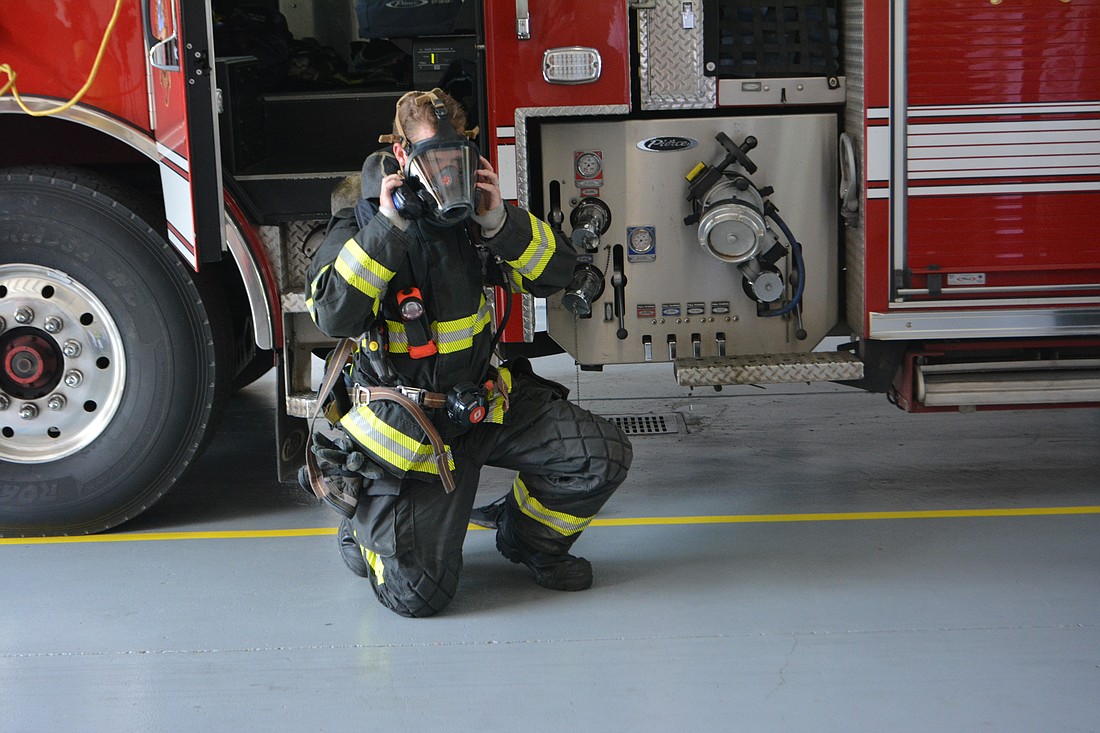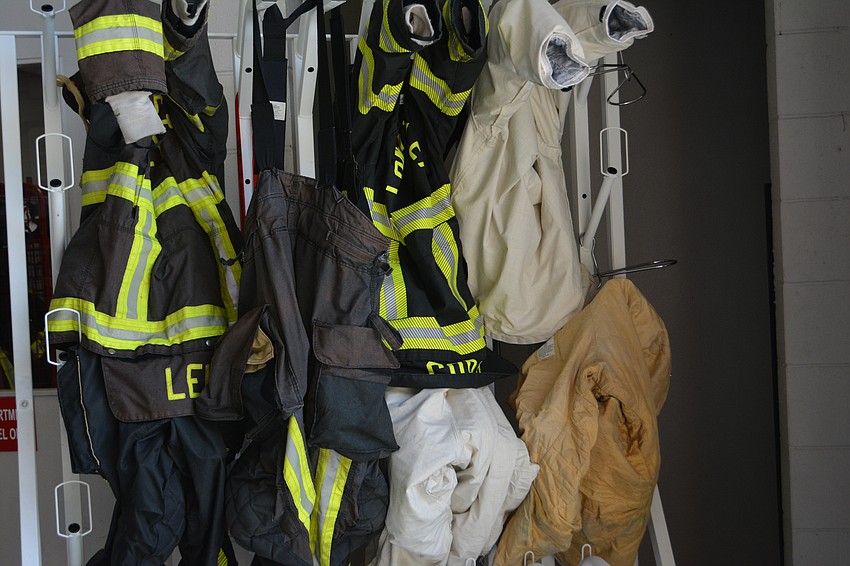- April 25, 2024
-
-
Loading

Loading

In the hopes of saving the lives of those that save others', the Sarasota Memorial Hospital’s Brian D. Jellison Cancer Institute is teaming up with local fire departments to spread the word on occupational hazards and ways to reduce exposure to hazardous and cancer-causing agents.
On May 23, members of the Longboat Key Fire Rescue and surrounding communities, including North Port, Venice and Manatee County fire departments, heard from cancer institute leaders Kelly Batista and Richard Brown about the risks and resources available to them through the institute’s “Firefighter Cancer Collaborative.”
“As members of your team or their loved ones may have a suspicious finding or a confirmed diagnosis of cancer, they now have a point person in our navigation team that they can go to,” Batista said. “Many times a suspicious finding or a diagnosis is very scary for the individual, their family members or caregivers, so understanding that they have someone who understands what they are going through, who is very educated in next steps that are available to them and knows the right members of the care team to go to to make sure they have seamless process through their care is of utmost importance.”
Cancer is one of the leading causes of death in firefighters. While there is not a known way to pinpoint the origin of a cancer diagnosis, studies from the Centers for Disease Control show that firefighters have a 9% higher risk of being diagnosed with cancer and 14% higher risk of dying from cancer than the country's general population.
“We need to do everything we can to understand what those risks are, try to mitigate them any way that we can by educating you and understanding that any cancer, if you catch it earlier, is better than if you let it go,” Brown said. “Firefighters tend to be younger, fitter and tend not to think anything is going to happen to them. Unfortunately, that is not correct.”
A cancer diagnosis can come from a combination of two primary factors — genetics and environmental factors. For example, while someone might have a family history of lung cancer, if they smoke cigarettes the likelihood of a diagnosis increases.
“Everyone needs to understand what is going on in them as well as their environment to try and mitigate these things,” Brown said. “We also know that firefighters by virtue of what they do are at a higher risk. … We understand that there are a multitude of agents that you get exposed to on a daily basis that are carcinogenic in nature.”
Exposure to hazardous substances comes with the job and even the gear meant to protect them from the dangers of the job.

The International Association of Firefighters and the Metropolitan Fire Chiefs Association released a joint statement in September 2022 warning firefighters of the presence of chemicals in their gear and the increased risk of liver and kidney cancers because of it. PFAS, or per- and polyfluorinated substances, are a group of chemicals present in the gear and are used to repel oil and water.
The groups encouraged firefighters to only wear the gear when necessary, but to continue doing so when responding to fires as it is still the best first line of defense for limiting exposure to fireground contaminants such as benzene, arsenic, lead, asbestos and aldehydes. These substances are byproducts of combustion and the burning of certain materials in older structures.